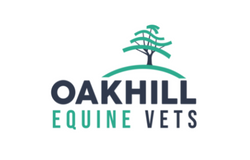Pre-purchase examinations
A pre-purchase examination or ‘vetting’, is an important step in the process of buying a horse. Book yours today for peace of mind regarding the health of your new horse.
PRE-PURCHASE EXAMINATION ‘VETTING’
Buying a horse or pony is an exciting time, but how do you know that the horse you are buying is suitable health-wise for the job you want it to do? During a pre-purchase examination (vetting), our experienced vets look for subtle problems which are easily overlooked in the excitement of making a new purchase.
There are two ‘levels’ of vetting: the standard ‘five stage’ and the more limited ‘two stage’. We recommend a five stage vetting for any ridden horse, regardless of value, as some problems will only become apparent following strenuous exercise. The cost of a vetting is a relatively small part of buying a horse, and certainly cheaper than buying a horse with a problem!
If you plan on taking out insurance for vet fees for your horse, many insurance companies request a copy of your horse’s PPE certificate prior to the commencement of insurance cover.
Got questions? Unsure which vetting is right for you? Get in touch!
THE EXAMINATION ‘VETTING’
Stage 1 – Preliminary Examination
This is a methodical examination of the animal’s body to assess general appearance and condition. It includes examination of the teeth, the resting heart, the eyes by opthalmascope, the skin, the limbs and feet, and flexion of the limb joints to reveal pain or limitation of movement.
Stage 2 – Trotting Up
The animal is walked and trotted on hard, level ground in order to detect gross abnormalities of gait and action.
Stage 3 – Strenuous Exercise
The animal is given sufficient strenuous exercise (1) to make it breathe deeply and rapidly so that any unusual breathing sounds maybe heard; (2) to increase the action of the heart so that any abnormalities may be more easily detected; and (3) to tire the animal so that strains or injuries may be revealed by stiffness or lameness after a period of rest.
Stage 4 – A Period of Rest
The horse is allowed to stand quietly for a period. During this time the breathing and the heart are checked as they return to their resting levels.
Stage 5 – The Second trot and Foot Examination
The horse is walked and trotted again, turned sharply and backed, in order to reveal abnormalities exacerbated by the strenuous exercise stage.
BOOK A VETTING
ADDITIONAL OPTIONS
VDS bloods should be taken at the time of a vetting. These bloods are stored by an external laboratory for a period of six months and can be analysed for the presence of sedatives and anti-inflammatory medication, in your horse’s bloodstream at the time of the vetting, if required.
Radiographs (X-rays) may also be taken and are often requested by insurance companies if you are insuring your horse above a certain monetary value. These can show if there are any joint abnormalities which may become a problem in the future, such as OCD in a young horse. Generally we will take X-rays of the feet, fetlocks, hocks and stifles, but further images of other joints and/or the spine can be taken if required.
Problems commonly encountered during a pre-purchase examination may include:
- Eye problems
- Lameness
- Conformation
- Respiratory abnormalities
- Heart murmurs or irregular heartbeat
- Sarcoids/melanomas etc.
These conditions may render the horse unsuitable for purpose or reduce the value of the horse for resale.
